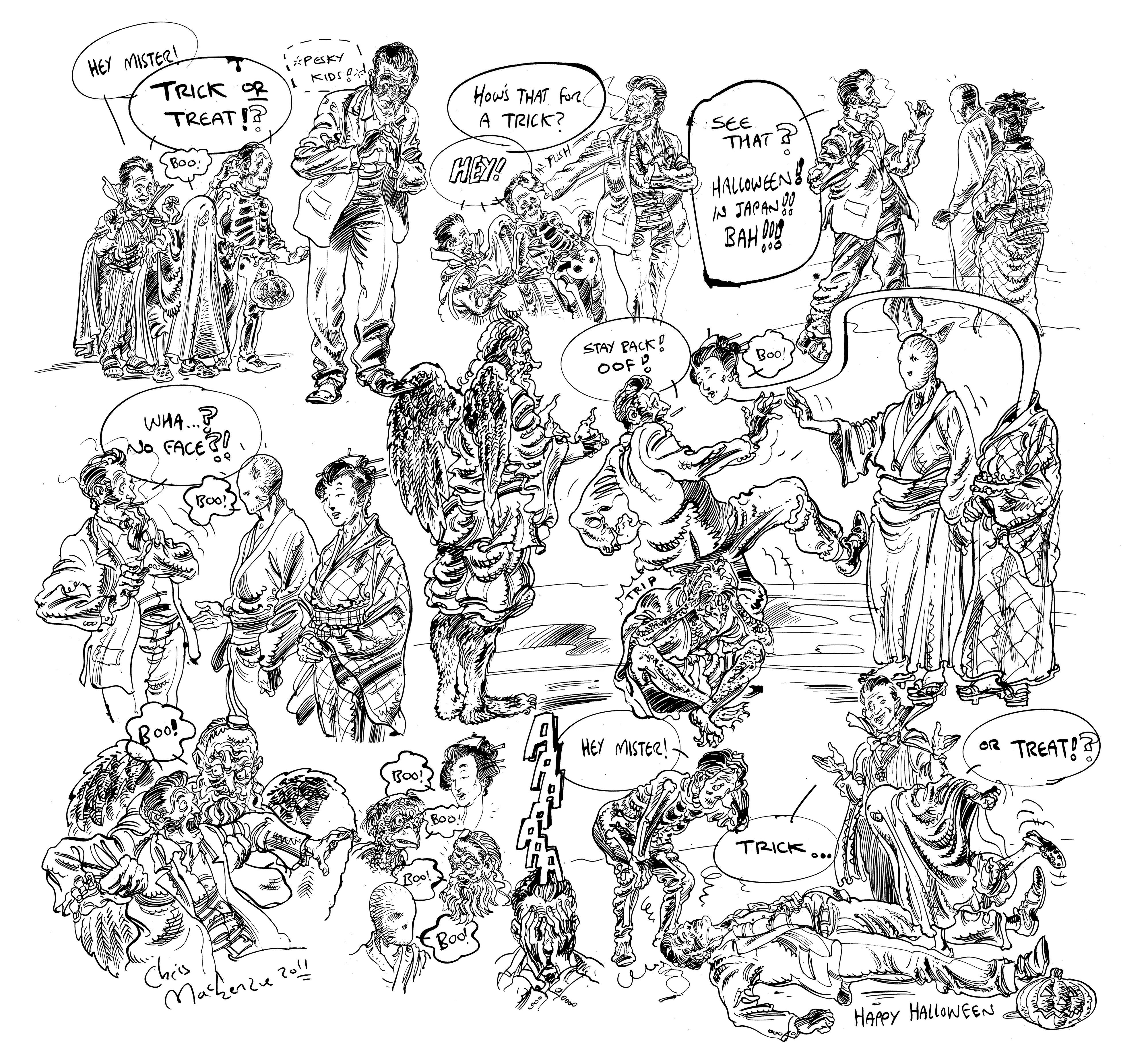Halloween is that time of the year when the occult, macabre and humorous come together to create a festival of fear and fun for all the family. A celebration of death and demons with its roots in pre-Christian Europe, the summer's-end spook-fest has morphed over the centuries into a highly commercialized — and arguably sanitized — phenomenon that has spread its icy grip around the globe.
Halloween was not celebrated in Japan until recently, but the country has long been open to cultural and religious traditions from abroad, and younger generations seem to have embraced this new opportunity to party in faux-spooky fashion. Part of the attraction might be that Halloween's dress-up tradition has obvious similarities with cosplay which, as well as involving anime- and computer game-inspired costumes, also incorporates ninja, samurai and other traditional elements.
Despite being relative newcomers to Halloween, the Japanese have of course been taking their ghosts and monsters very seriously for centuries, leaving behind a rich vein of supernatural fiction and spooky storytelling. During the Edo Period, for example, there was a popular game among the samurai called Hyakumonogatari Kaidankai (A Gathering of One Hundred Supernatural Tales). The players gathered in a room at night and, after lighting 100 candles, took turns telling scary stories. After each tale a candle was extinguished, and the room steadily grew darker and darker. It was believed that when the room was pitch black, a ghost would appear.

















With your current subscription plan you can comment on stories. However, before writing your first comment, please create a display name in the Profile section of your subscriber account page.